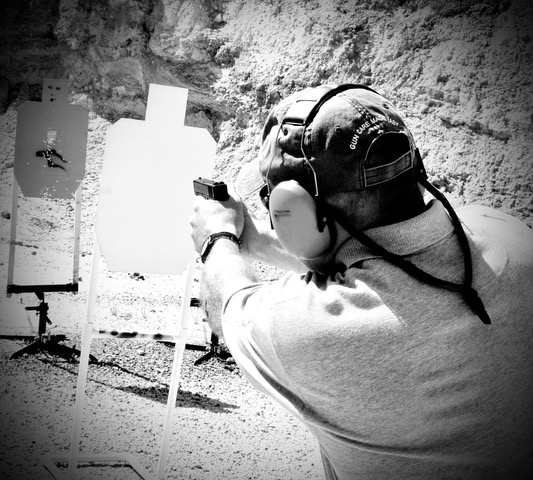
One of the major points I constantly point out to students is the necessity of thinking beyond the range drills run during class. We focus on a variety of skills, such as movement, using cover, communicating and using cover, shooting accurately and manipulating the weapon. There’s a heavy dose of “mind-set,” developing the ability to solve the problems students are likely to face. But, there’s no way the drills can come up with every application of the fundamentals. Students have to think beyond the range drills, making the connections between the range drills and life outside the range.
The fundamentals are always in play. They apply to individual confrontations and massive engagements involving hundreds or thousands of combatants. The ability to move and communicate, use cover or the terrain and place accurate shots on target have been and always will be the major factors in violent confrontations. The goal is to be able to make decisions quickly and apply these skills at the right time.
Range drills occur in a controlled environment and focus on specific skills. “On the ‘Threat front!’ command,” the instructor says, “move right to cover and engage the threat.” On command shooters execute the drill. The job of students is thinking about how these same skills apply in a dark parking lot at night.
The drill enforces the necessity of moving immediately – even if it’s just forcing them into a reactive frame of mind – and using cover for protection. Deliver accurate shots in the proper place stop the threat. You practice these skills until they can be applied on demand, under stress and with little or no warning.
In an actual confrontation the environment and conditions you face dictate what direction to move, where your cover is or how many rounds need to be fired, if any. Fights are very fluid; you must react immediately when conditions shift.
You’re moving back, creating distance from the threat while issuing verbal commands and drawing your weapon. As you back up you notice another possible threat to the left. You immediately change direction to create distance from both threats. The pistol is in hand, you’re committed to firing, but the threats change their mind about continuing the attack. There’s a fraction of a second for you to recognize the shift and decide not to shoot. On the range, during training and practice, it’s impossible to include the variety of ways factors can change. Again, fighting is “problem solving at high speed.” You must think beyond the range.
The best method to prepare for the unpredictability of a violent confrontation is mental imagery training. You vividly imagine a confrontation in your mind, seeing, feeling and smelling minute details – watching the situation develop from your eyes and not as a third person. Suddenly, two angry men are screaming obscenities and rapidly approaching. You imagine commanding them to stop, creating distance, drawing your weapon. The complete scenario is played out in real time. This imaginary event is filed away in the mind, which can’t distinguish between something we’ve vividly imagined and an actual event. These “memories” give you a frame work or reference to use when something real does happen. You’re thinking beyond the range.
Training and practice occur on and off the range. On the range you’re developing the necessary skills, and learning how to apply them. Off the range you’re determining how these skills might apply in your fight. Just because you can’t get to the range doesn’t mean you can’t be practicing. Study this well.
Tiger McKee is director of Shootrite Firearms Academy, located in northern Alabama. He is the author of The Book of Two Guns, AR-15 Skills and Drills, featured on GunTalk’s DVD, “Fighting With The 1911 and has regular columns in Gun Digest and American Handgunner.
http://www.facebook.com/pages/Shootrite-Firearms-Academy/156608611038230?ref=ts